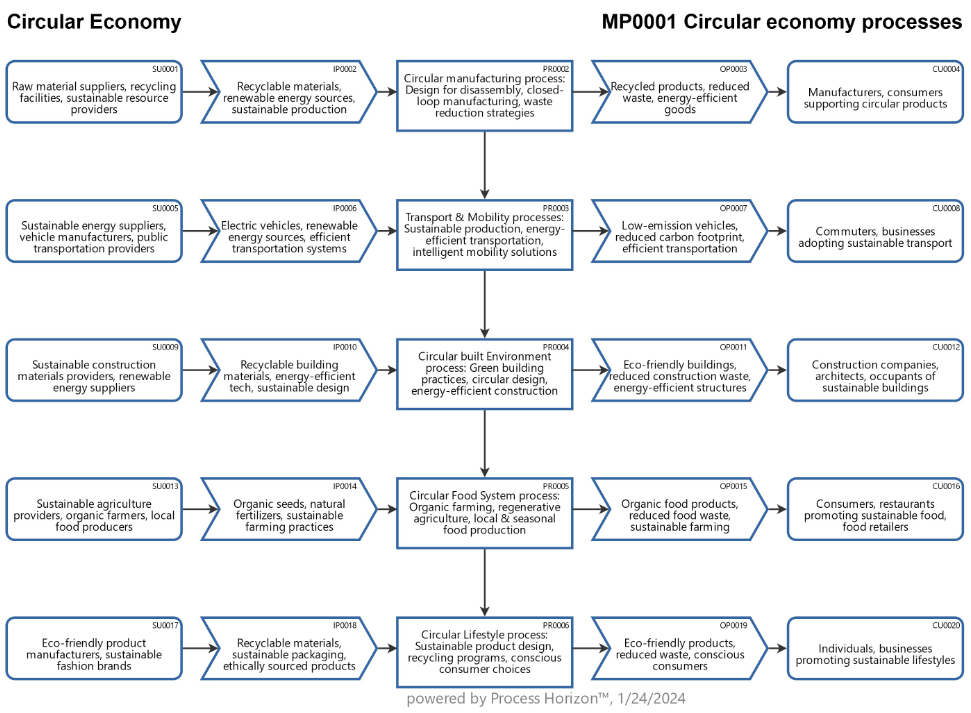What are the goals and processes for the advancement of a circular economy ?

The main goals of a circular economy are centered around sustainability, resource efficiency and minimizing environmental impact. In a circular economy, the traditional linear model of "take, make, dispose" is replaced with a closed-loop system where resources are used more efficiently and waste is minimized.
- Minimize Waste: Reduce the generation of waste by promoting the design of products that are durable, repairable, and recyclable. This involves minimizing the use of raw materials and energy in the production process.
- Reuse and Recycling: Encourage the reuse of products and materials to extend their lifespan. Recycling plays a crucial role in the circular economy by converting waste into new products, reducing the need for virgin resources.
- Resource Efficiency: Optimize the use of resources throughout their life cycle. This involves extracting, processing, and using resources more efficiently, as well as finding ways to recover and reuse materials.
- Economic Benefit: Promote economic growth by creating new business models and job opportunities. The circular economy aims to decouple economic development from resource depletion, fostering innovation and entrepreneurship.
- Environmental Conservation: Reduce the environmental impact of production and consumption by minimizing pollution, lowering greenhouse gas emissions, and preserving ecosystems. The circular economy seeks to mitigate the negative effects of traditional linear systems on the environment.
- Resilience and Security: Enhance resilience against resource scarcity and price fluctuations. By diversifying sources of materials and reducing dependence on finite resources, a circular economy contributes to economic and resource security.
- Social Benefits: Improve social well-being by fostering sustainable consumption patterns and responsible production practices. This involves considering the social implications of resource use and waste management, such as human rights, labor conditions, and community well-being.
- Innovation: Drive innovation in product design, manufacturing processes, and business models to promote sustainability. The circular economy encourages the development of new technologies and solutions that contribute to a more sustainable and regenerative system.
By pursuing these goals, a circular economy aims to create a more sustainable and resilient model for production and consumption, addressing the challenges posed by finite resources, environmental degradation and the increasing demand for goods and services.
Explore the smart ProcessHorizon web app for interactive process design with automagically generated SIPOC process maps: https://processhorizon.com

